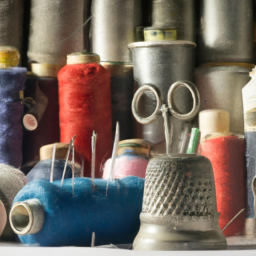
The History of the Sewing Tomato
Sewing has been an integral part of human civilization for centuries, and with it came a variety of tools and accessories. One such accessory, which holds a unique place in the sewing world, is the humble sewing tomato. Also known as the pincushion tomato or the emery strawberry, this handy tool has a fascinating history intertwined with the art of sewing.

Origins of the Sewing Tomato
The use of pincushions can be traced back to ancient Egypt, where workers used small stuffed cushions to hold their pins and needles. However, the sewing tomato, as we know it today, made its debut in the late 19th century when the industrial revolution took the sewing industry by storm.
The shape of the sewing tomato is inspired by the real-life tomato. At the height of the industrial revolution, tomatoes were a commonly found fruit due to their availability and affordability. Thus, innovative craftsmen saw an opportunity to repurpose the tomato shape and create a practical sewing tool that served multiple functions.
Functionality and Importance
The sewing tomato is primarily used as a pincushion, providing a convenient and safe place to store needles and pins while sewing. The tomato’s soft exterior allows the pins and needles to be inserted with ease, ensuring they remain secure and accessible when needed.
Another crucial feature of the sewing tomato is its attached strawberry-shaped emery. An emery is a small abrasive pad filled with emery powder, which is a type of mineral. By rubbing the pins and needles against the emery, sewers can sharpen and clean them, resulting in more precise and efficient stitching. The emery also helps to remove any rust or irregularities, prolonging the lifespan of the sewing tools.
The Symbolic Meaning
Interestingly, the sewing tomato holds symbolic importance within the sewing community. It represents good luck and prosperity. It is believed that having a sewing tomato in the sewing kit or workspace can bring fortune and positive energy to the seamstress or tailor.
The vibrant red color of the tomato also holds significance. Red is associated with strength, passion, and creativity. The tomato’s shape and color create an uplifting and inspiring ambiance, making the sewing process more enjoyable and motivating.
Evolution and Modern-day Usage
Over time, the sewing tomato has undergone several transformations. Today, you can find sewing tomatoes in a variety of sizes, colors, and designs. Some are made with decorative fabrics, while others incorporate additional storage compartments or even come with attached pincushion fruits like strawberries or cherries.
While traditional sewing tomatoes are still popular among sewing enthusiasts, modern technology has introduced new tools that serve similar functions. Magnetic pincushions, for example, use magnets to securely hold pins and needles. However, the sewing tomato remains a beloved symbol of the art of sewing, with its nostalgic charm and practicality.
Next time you dive into the world of sewing, take a moment to appreciate the rich history behind the sewing tomato. Its journey from ancient pincushions to a beloved sewing accessory is a testament to the creativity and innovation of human craftsmanship throughout the ages.




